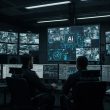Journalism can never be silent: that is its greatest virtue and its greatest fault. It must speak, and speak immediately, while the echoes of wonder, the claims of triumph and the signs of horror are still in the air
Henry Anatole Grunwald
Journalism must speak and it must speak immediately. I believe it should serve a purpose, I believe it should be informative and should evoke a sense of urgency. This quote by the American journalist simply was the primary inspiration for my choosing my story. I always wanted to work on something that would bring something of depth to the table. This journey was not as easy as breathing. It was a challenging ride. But the production of every new story would leave you with new learning experiences.
The American Philosopher, Donald A. Schon, talks about two unique reflective practices, Reflection-in-action and Reflection-on-action, recalling one of my Digital Journalism lecture classes here. My reflection is much more like a Reflection-on-action. To have a conversation with my experiences, review my journalistic piece of work post the event, and at the same time, reflect on the moment, knowing-in-action was something acted impulsively.
The story I chose was much more scientific in its approach. Deep sea mining and how it impacts the ocean ecosystems. The feature attempts to uncover how such unsustainable practices threaten the structure of the seabed and its vast lesser-known biodiversity. It was indeed a learning process. An in-depth knowledge of the issue was necessary for the feature. The story demanded interviewees with expertise and experience. It was interesting to get into the depths of the story. It unfolded so much information and potential for an in-depth feature story.
Reflecting on how and why I did what I did is exciting and arduous. As mentioned, it was not an easy ride. I remember from one of my lecture classes how crucial connections and contacts are in the context of journalism. Initially, as a young student journalist, it was a Herculean task to connect with my interviewees and gather accurate and timely information on this issue. Time is very much crucial.
Throughout the journey, I realised how time plays an irreplaceable part in the life of a student journalist. I had to drop different newsworthy stories just because I struggled to get an interviewee. For this story, one particular interviewee remains anonymous. Unfortunately, I could not use that interview for the feature. Every interview is an experience, a learning process, and one of the key takeaways from this assessment.
The production and post-production of the shortform video were smooth. I did put my best efforts into making use of the content and my creativity to produce a decent video for social media. This module helped me gain more familiarity with the latest social media platforms for communicating with the target audience. The social video was more of a short explainer and adaptation of my story. Appropriate texts and subtitles were used wherever necessary. The footage and images used in the video were given proper credit in the video itself. Copyright-free images and videos were used for the creation of the shortform video. The breaker branding and guidelines were also followed in the making of the video.
The portfolio targets the general public. The topic chosen for the assessment is relatively new and less explored. The story aims to raise awareness about deep-sea mining, the environmental consequences linked to the practice and the looming threats to ocean ecosystems. This story could be informative and can engage the audience to make rational and informed choices. The reporting attempts to highlight the knowledge gap revolving around the issue. The story is suitable for an audience invested in environmental issues and conservation as it delves deep into the subject matter to understand the detrimental impacts of seabed mining, on marine biodiversity and climate change.
Due to personal circumstances, all my interviews were via online platforms. Therefore, adding more original images other than images screenshots from Zoom calls was not possible. The feature makes use of AI-generated images, generated by Night Café. And content-wise, I could not make use of any AI-assisted technology in this assessment as the facts and stats generated could not be fact-checked and verified.
Academically speaking, I understand how to identify my audience and what sort of news will hit them. My ability to understand how individuals and institutions work and react, to a great extent, has changed my perspectives and judgements on newsgathering and its techniques. Learned quite a lot from this module. On a personal note, amidst some struggles and ambiguity, even when I thought I would successfully fail, I was able to figure solutions out and make sense of them. Small wins matter.




